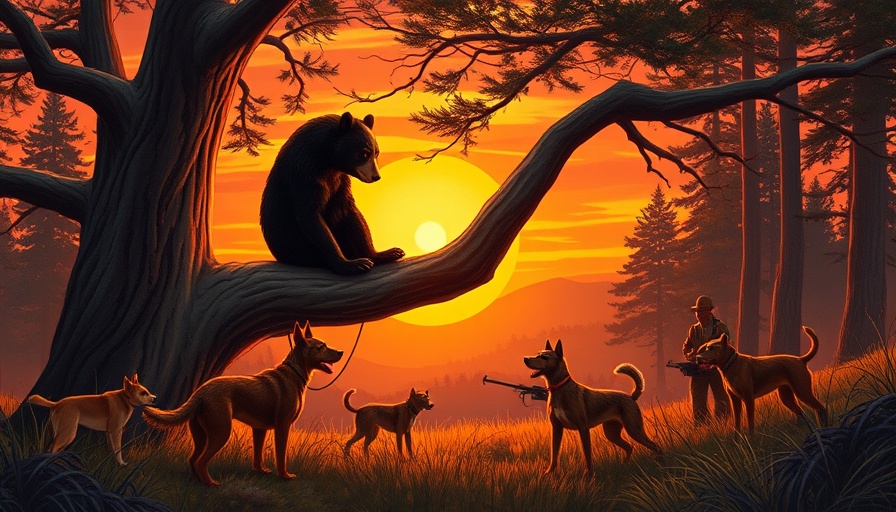
The Unexpected Hero: Man's Best Friends Take on a Bear
In rural Michigan, an unlikely situation unfolded over the years with a notorious black bear causing havoc. Known for its surprising agility and sheer audacity, the bear became a significant problem for sheep farmers, leading to the death of hundreds of sheep. The community found itself in a dilemma: protect the livestock or allow nature to take its course? Enter a pair of dogs, bred for herding and protection. Their instincts and training turned the tide in what has been a long-standing battle against the bear, illustrating just how pivotal animals can be in preserving rural livelihoods.
The Lambs’ Lament: A Community's Challenge
The story of this black bear is more than just about one animal; it sheds light on the ongoing challenges faced by farmers in wildlife-dense areas. As more people choose to live near nature, the interactions between humans and wildlife become increasingly complex. Farmers in rural communities, particularly near national parks or forests, constantly navigate these ecological challenges, raising questions around sustainability, wildlife management, and rural economies.
Black Bear Behavior: A Deeper Dive
Understanding the behavior of black bears is essential for averting conflicts with humans. They are opportunistic feeders and can be drawn to easy prey or food sources, such as livestock. This bear's appetite for sheep exemplifies how animals will adapt their behaviors based on their environment. Awareness of these patterns can aid farmers in devising strategies to protect their livestock effectively. Innovative techniques such as secure fencing, better waste management, and trained animals like herding dogs can mitigate potential conflicts.
Lessons from the Wilderness: How Dogs Became Key Players
The dogs that ultimately caught up with the bear represent an essential part of the story, showcasing the special bond between humans and their canine companions. Their natural instincts for herding and protection not only safeguarded the flock but also preserved the farmers' way of life. Training and teamwork played vital roles, emphasizing the importance of preparation and adaptability when faced with unforeseen challenges.
Future Predictions: What Lies Ahead for Wildlife and Farming?
As urban areas continue to expand into wildlife habitats, the interactions between animals and farmers are set to evolve. This bear saga could be a snapshot of broader ecological themes, leading to new protocols for wildlife encounters. The balance between protecting agricultural interests and ensuring wildlife conservation is delicate but necessary. Future technological advancements in wildlife management tools could offer farmers innovative solutions to resolving conflicts.
Conclusion: Community Resilience and Responsible Wildlife Management
The tale of the black bear and the courageous dogs highlights the resilience of rural communities when faced with wildlife challenges. It urges a conversation around coexistence, urging us to embrace responsible wildlife management that reflects both compassion for animals and the needs of local farmers. Those interested in wildlife adventures, whether through exploration or direct encounters, must take heed of the lessons learned from this bear saga, understanding that challenges lie ahead but can be managed with care, respect, and ingenuity.
In the spirit of exploration and adventure, consider sharing your own wildlife encounters or strategies for sustainable coexistence in your community. Every experience offers valuable insights, contributing to a shared resource for living harmoniously within our beautiful yet complex natural world.
 Add Row
Add Row  Add
Add 




Write A Comment